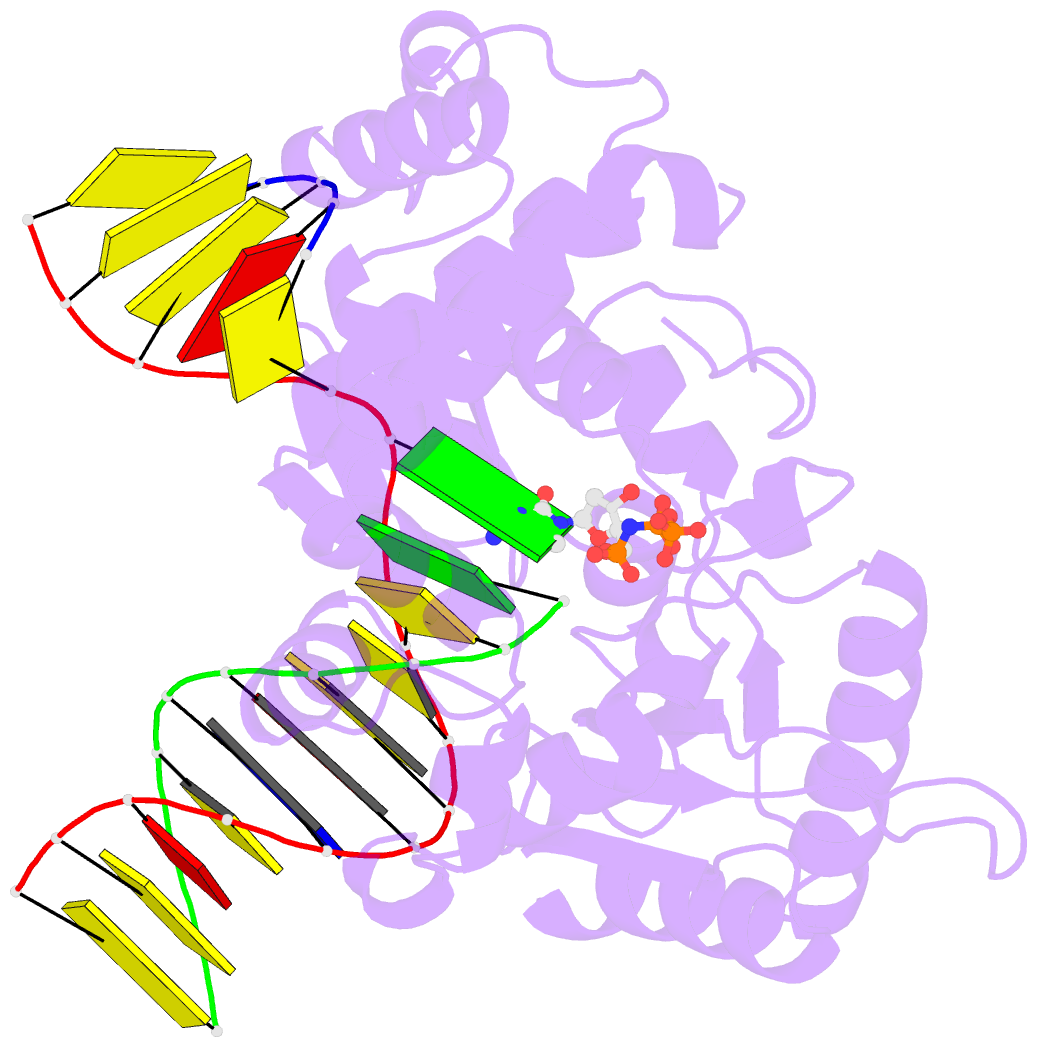Summary information and primary citation
- PDB-id
- 4tur; SNAP-derived features in text and JSON formats;
DNAproDB
- Class
- transferase,lyase-DNA
- Method
- X-ray (2.169 Å)
- Summary
- Human DNA polymerase beta inserting dcmpnpp opposite the 5'g of cisplatin crosslinked gs (pt-gg2)
- Reference
- Koag MC, Lai L, Lee S (2014): "Structural Basis for the Inefficient Nucleotide Incorporation Opposite Cisplatin-DNA Lesion by Human DNA Polymerase beta." J.Biol.Chem., 289, 31341-31348. doi: 10.1074/jbc.M114.605451.
- Abstract
- Human DNA polymerase β (polβ) has been suggested to play a role in cisplatin resistance, especially in polβ-overexpressing cancer cells. Polβ has been shown to accurately albeit slowly bypass the cisplatin-1,2-d(GpG) (Pt-GG) intramolecular cross-link in vitro. Currently, the structural basis for the inefficient Pt-GG bypass mechanism of polβ is unknown. To gain structural insights into the mechanism, we determined two ternary structures of polβ incorporating dCTP opposite the templating Pt-GG lesion in the presence of the active site Mg(2+) or Mn(2+). The Mg(2+)-bound structure shows that the bulky Pt-GG adduct is accommodated in the polβ active site without any steric hindrance. In addition, both guanines of the Pt-GG lesion form Watson-Crick base pairing with the primer terminus dC and the incoming dCTP, providing the structural basis for the accurate bypass of the Pt-GG adduct by polβ. The Mn(2+)-bound structure shows that polβ adopts a catalytically suboptimal semiclosed conformation during the insertion of dCTP opposite the templating Pt-GG, explaining the inefficient replication across the Pt-GG lesion by polβ. Overall, our studies provide the first structural insights into the mechanism of the potential polβ-mediated cisplatin resistance.





